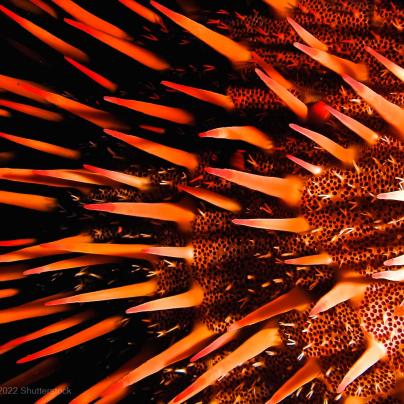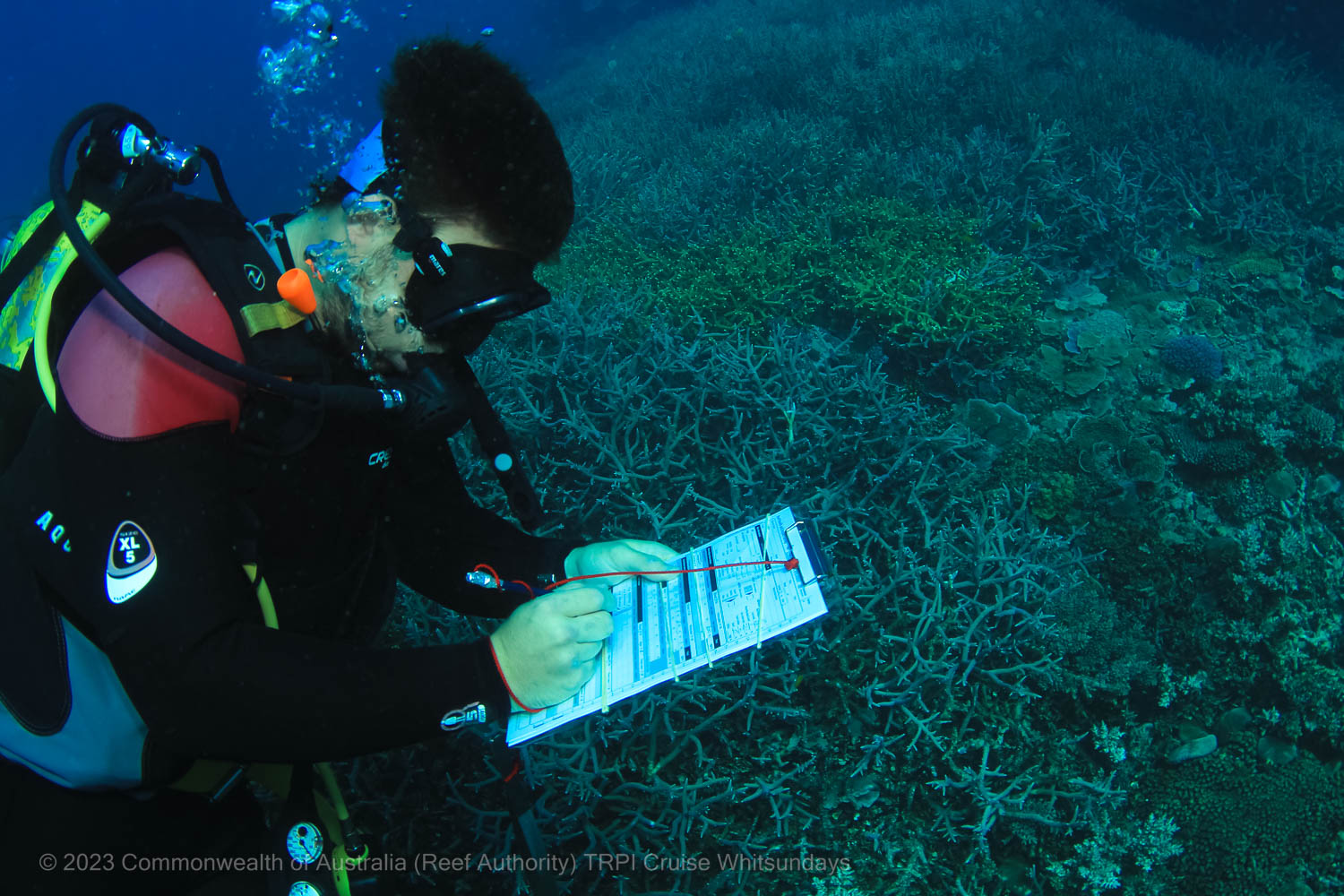There are several animals that naturally predate on corals. In sustainable numbers, these animals play a critical role in the Reef ecosystem. In outbreak proportions however, these predators can add undue pressures on corals ability to recover from other pressures they are facing.
Outbreaks occur when predators consume corals at a rate faster than the coral can grow.
- Causes of outbreaks are not entirely known but could be contributed to by:
- Excess nutrients from run-off and natural upwelling
- Availability of live coral to eat
- Ocean currents that spread larvae across the Reef, and
- fewer natural predators



Crown-of-thorns starfish – a perfectly evolved predator
Crown-of-thorns starfish are are well-known for their prickly appearance. Naturally occurring in the Indo-Pacific, they are native to the Great Barrier Reef. Scientists have identified four crown-of-thorns starfish species: North and South Indian Ocean species (Acanthaster planci and A. mauritiensis), a Red Sea species (unnamed), and a Pacific species (A. cf. solaris). A. cf. solaris is the most common species on the Great Barrier Reef.
The world’s second largest starfish, the crown-of-thorns starfish has been recorded to grow up to a metre across and is easily distinguished by its spiney appearance and up to 21 arms. The crown-of-thorns starfish, sometimes known as COTS, are the fastest moving starfish, travelling at speeds up to 20 metres an hour.
- Crown-of-thorns have unique biology that leads to rapid population growth:
- An adult crown-of-thorns starfish can consume half their body weight of coral each day
- Mature females can produce up to 100 million eggs when they spawn
- Their larvae can clone themselves (if the conditions are right)
Crown-of-thorns starfish are part of the echinoderm family, a group of invertebrates that include starfish, urchins and sea cucumbers. Like other sea stars, the crown-of-thorns eats by pushing out the stomach from their body over its prey – coral tissue. It excretes digestive enzymes across the coral, absorbing its food into its stomach, leaving behind white scars on the corals where the tissue has been removed.
These starfish are highly resilient, able to survive months without eating. The juveniles can live dormant amongst coral rubble feeding on nothing more than coraline algae, a pink calcium-based algae, until the conditions are right for them to grow.
Each thorn is covered with a toxin, making them venomous to many animals and humans. There are some natural predators who are able to palate these creatures. Among these crown-of-thorns crunchers are the giant triton snail, titan triggerfish, starry pufferfish and humphead maori wrasse.
Coral cover, fishing and crown-of-thorns starfish – how they are linked
Studies around the world have found that areas with overfishing, often have lower coral coverage and higher presence of crown-of-thorns starfish. Many popular fishing species including snapper and emperor munch on juvenile crown-of-thorns that lie dormant amongst the reefscape. These fish and many invertebrates play an important role in the suppression of crown-of-thorns outbreaks, preventing them from growing into adults.
The Crown-of-thorns Starfish Control Program is leading the intervention of crown-of-thorns outbreaks on a Reef wide scale, while tourism operators are undertaking site specific management at key tourism sites through the Tourism Reef Protection Initiative.
Drupella snail
Tiny but mighty. These coral predators are small in comparison to crown-of-thorns starfish, growing up to 5cm in length. They can consume coral tissue at a rate of 1.8cm2 a day.
Little is known about these prolific breeders, other than that they can produce almost 160,000 embryos each spawning event. Their pelagic life stage has been documented to drift up to 180km from their origin and can live up to 45 years.
Tourism operators, through the Tourism Reef Protection Initiative are targeting outbreaks of these snails across their key sites, managing the populations through manual removal.


